Editor’s Note: This story was originally published in the Nostalgia Issue of Life & Thyme.
——
The average square footage of a one-bedroom New York City apartment is around 750. That makes it just slightly larger than most two-car garages. I have friends in the suburbs with garden sheds that put that footprint to shame. Those of us lucky enough to call the city home find ourselves sucked into smart-space design shows on HGTV, or complicit in reading listicles with clickbait titles like, “6 Tips for Killer Entertaining in Small Kitchens.” Truth be told, most of us don’t really bother trying.
With the term “dining room” being basically a bait-and-switch real estate catchphrase, and kitchens that in most cases barely compete with the bathroom of some home-in-the-country, the simple act of cooking dinner is no more than a quaint daydream. Real New York City living rarely occurs within these would-be places to live; instead of hosting backyard barbecues, we hit the gardens behind a Brooklyn bistro. When holiday time rolls around, open houses are a Facebook invite to the corner pub rather than a fireside congregation. And even entertaining the in-laws usually means making reservations rather than pot roast.
Restaurants aren’t just a luxury; they’re an indispensable part of daily life. They’re central to our occasions—the celebratory, special ones as much as the rote and routine. We don’t just love our local spots, we rely on them. Chefs cook our birthday dinners. Servers know our anniversaries. Host stands are a familiar signpost after work on a regular ol’ Wednesday night.
It all makes the staggering rate at which New York restaurants close pretty hard to stomach. It’s no wonder New Yorkers have a reputation for being a fickle bunch—we’ve been burned. We’ve fallen in love more times than we care to count only to find our new favorite place is the latest victim of a rent hike or rapidly changing neighborhood. We’re cautious and guarded, terrified to become attached.
We struggle over whether to share our secret place with vulturous crowds, torn between wanting to keep it to ourselves, and wanting to keep it on the map—the difference between making sure we can get a table and making sure the doors stay open is an impossible wisp of a line.
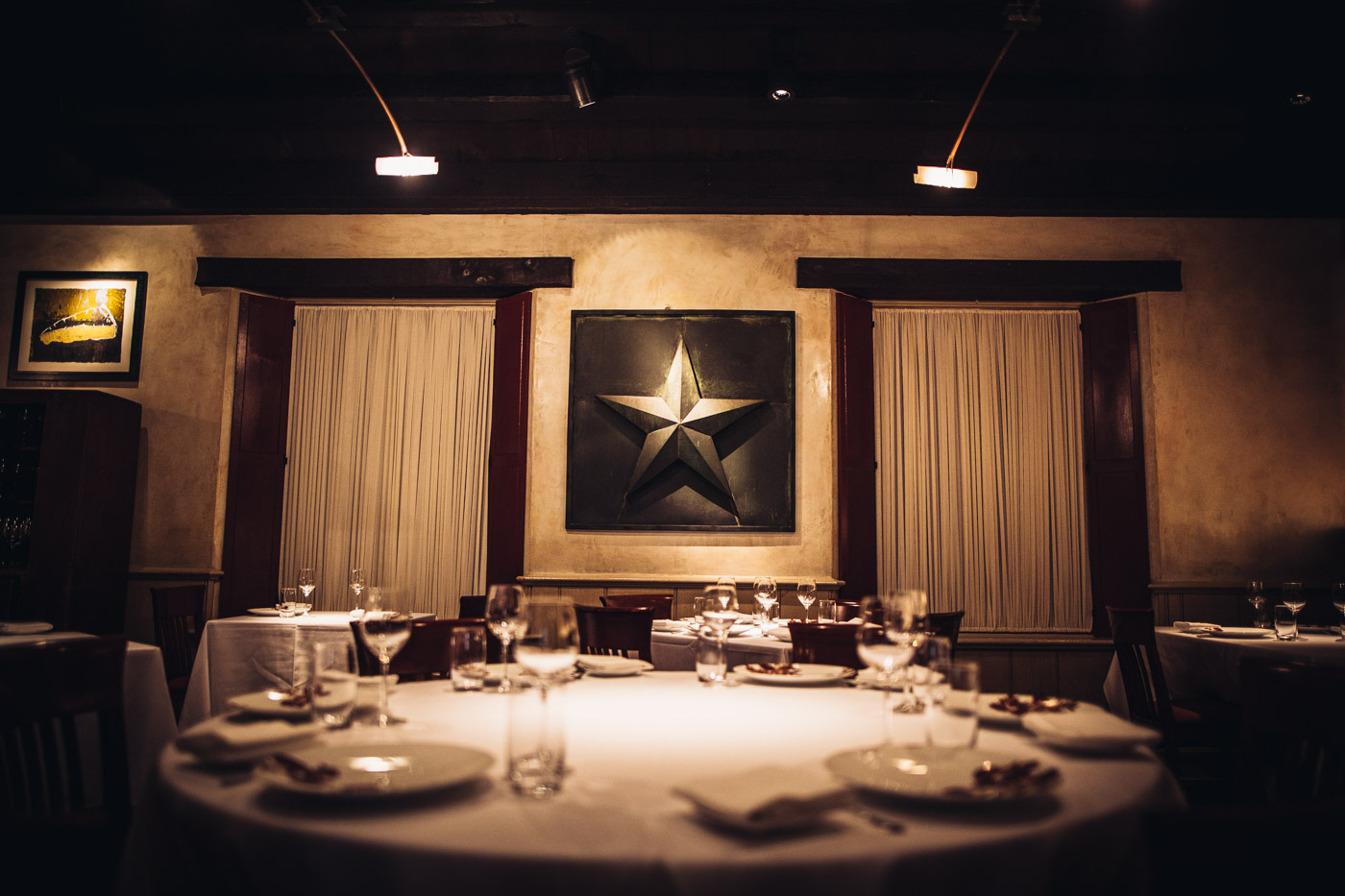

And it’s not just the little guys; I’ve watched celebrated, well-trafficked and critically acclaimed restaurants owned by food world heavyweights leave empty buildings behind. Real estate woes, management issues, sourcing—straight up competition. The gauntlet is perhaps more intense than anywhere in the world.
So we’re especially grateful to those spots that manage to stick it out; we reward them with severe, near-religious loyalty, deepened not just because they serve our favorite burger—but because they served it to us during our close cousin’s birthday, or after our newborn’s baptism, or our best friend’s bridal shower, or before the moment of our betrothal (because who doesn’t want to get engaged with a burger on the table?). The food and atmosphere may be the original draw, but our ongoing allegiance to a restaurant is often because its made itself inextricable from our memories. It takes a special kind of place to earn that right, but those that do are almost always always filled, regardless of circumstance. Reservation books filled with names, kitchens filled with dedicated cooks, and their four walls filled—not only with life, but with the activities of living.
——
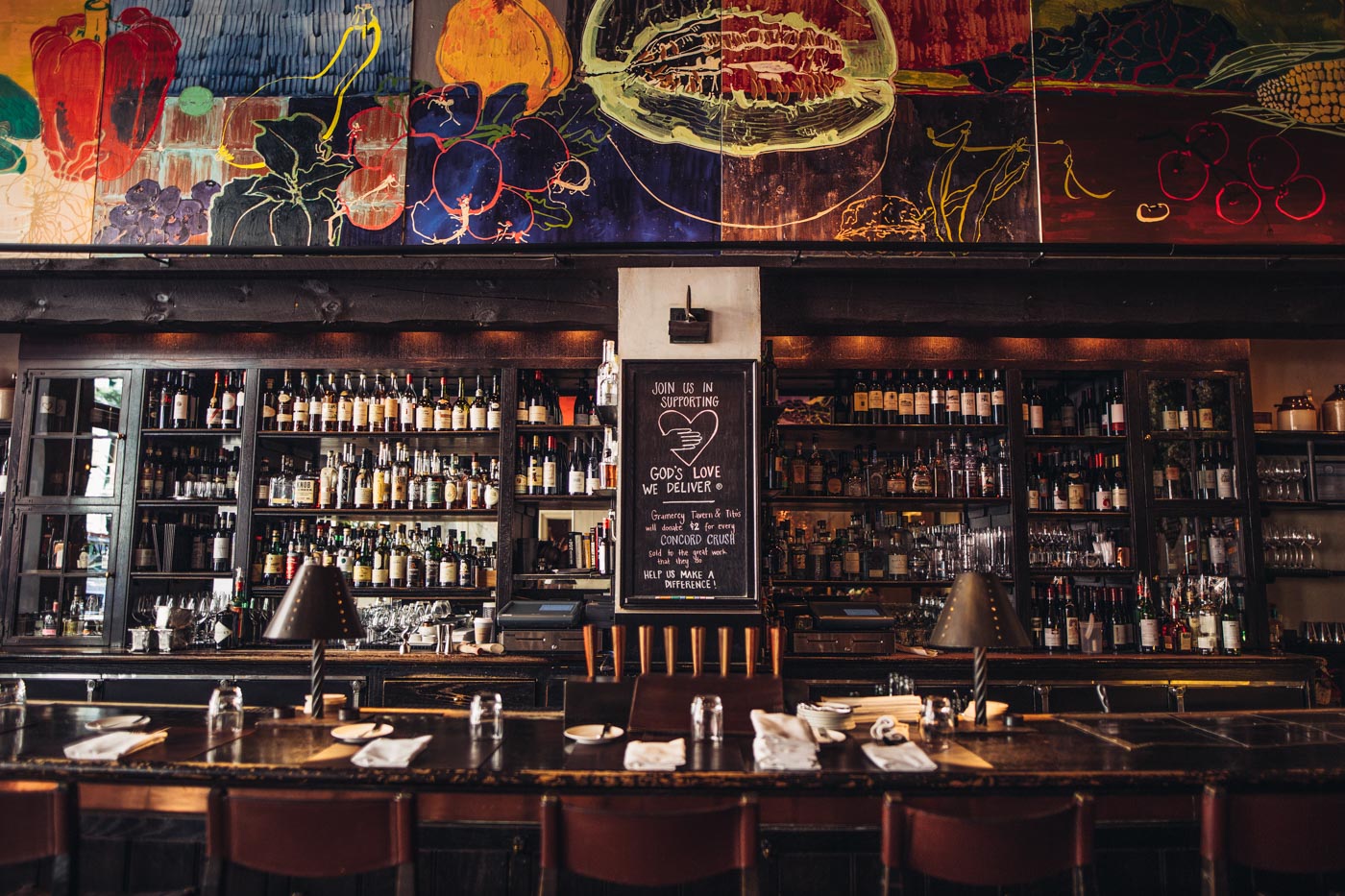
Massive murals of fresh produce above the dining room at Gramercy Tavern capture such a kinetic vibrance that it makes them look as if they’re actually moving. It’s fitting since the artist, Robert Kushner, painted them after spending four years in Japan and the canvases are mounted on a slide—not unlike a shoji Japanese wall. The brush strokes, the vividness of color—despite the fact that the depicted vegetables are more than 20 years old—feels distinctly alive.
Executive Chef and Partner Michael Anthony is explaining the décor, reaching into the history of the building. “This space was a factory, much like most of this neighborhood. Everything that is known as Gramercy Tavern was thought up and invented and designed.”
“All of these pieces were one of a kind,” Anthony continues. “Like many of the things [here], it represents a lot of firsts. Few restaurants built since are filled with so many individual, one-off pieces of art.”
And that art has been in the space since the early ‘90s when Gramercy Tavern opened its doors—long before we were running around with phrases like “farm-to-table” on our lips and emblazoned across our eco-friendly, reusable grocery bags. It’s timeless.
Its menu follows that same transcendent through-line; while we discuss the past, at present the kitchen is preparing for lunch service, arranging their mise en place for dishes like a sweet corn and grain salad with cherry tomatoes, almonds and pecorino, or a plate of lithely shaved beets paired with late-season stone fruit, a beef tartare in the dining room, a classic burger on the Tavern offerings (a daily verbal special served at lunchtime in limited supply). At once, it satisfies at the contemporary urban diner interested in seasonality, the food-scene savvy—but it’s also entirely approachable, take-your-folks-to-dinner fare, with recognizable menu entries for those who’d rather not rely on Google to guide their pre-meal reading.
For two decades, it’s been able to stay ahead of the curve and above the trends, to sidestep barreling bandwagons and resist the compulsion to cling to fads along the way that launched some of its contemporaries into the culinary stratosphere one day—and strangled them the next.
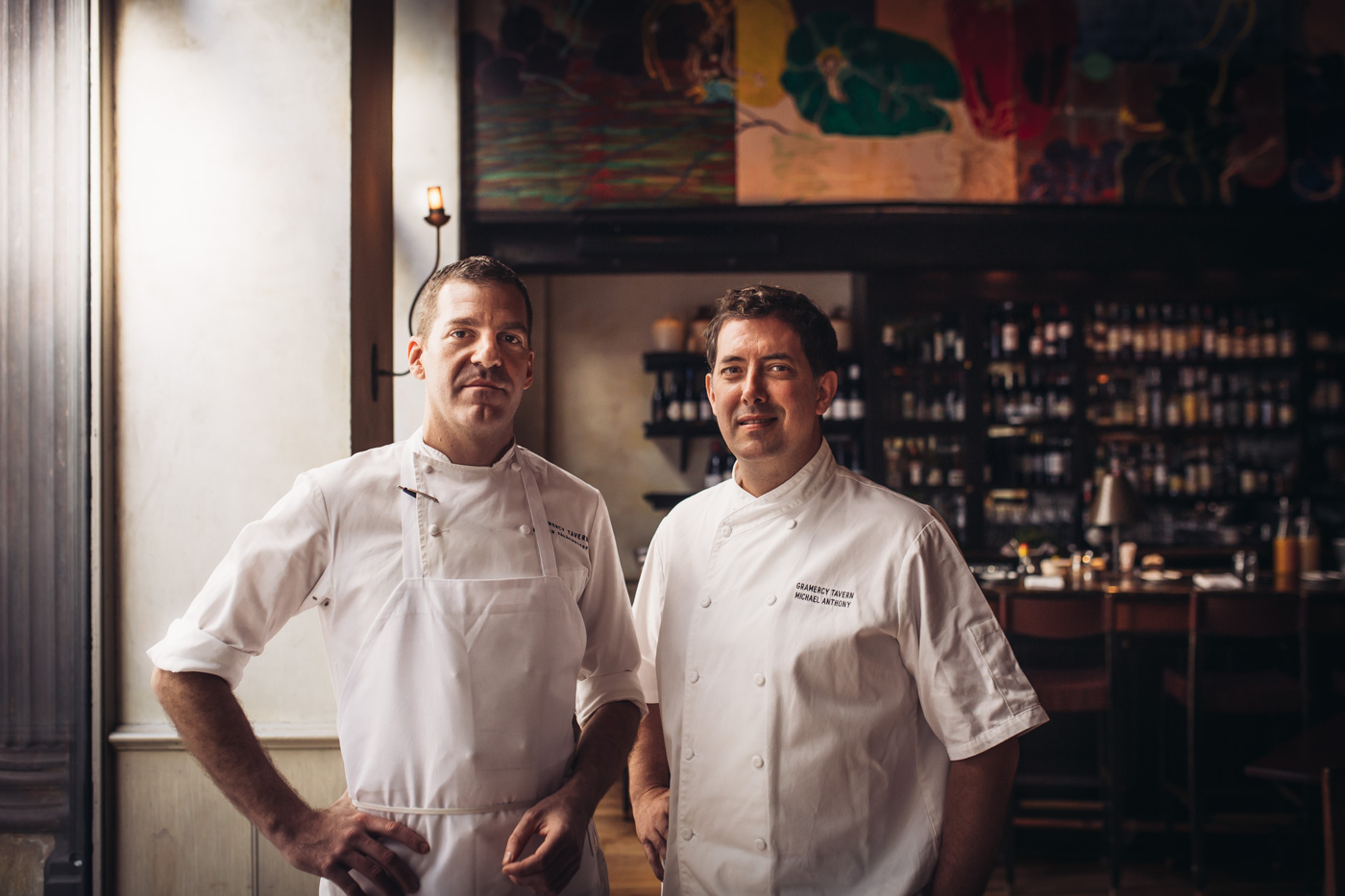
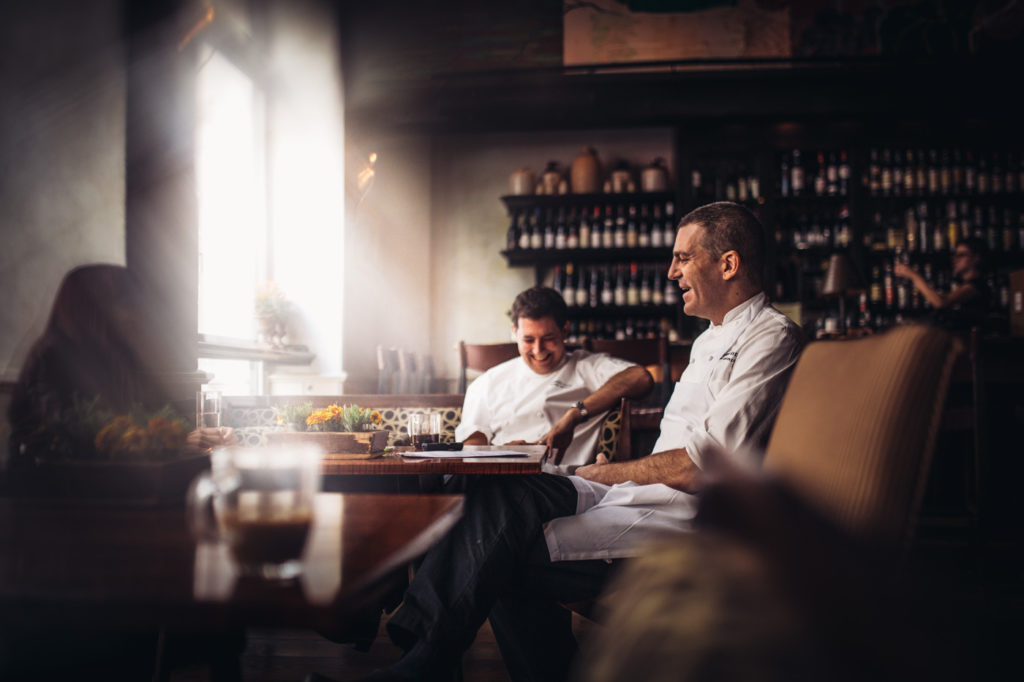

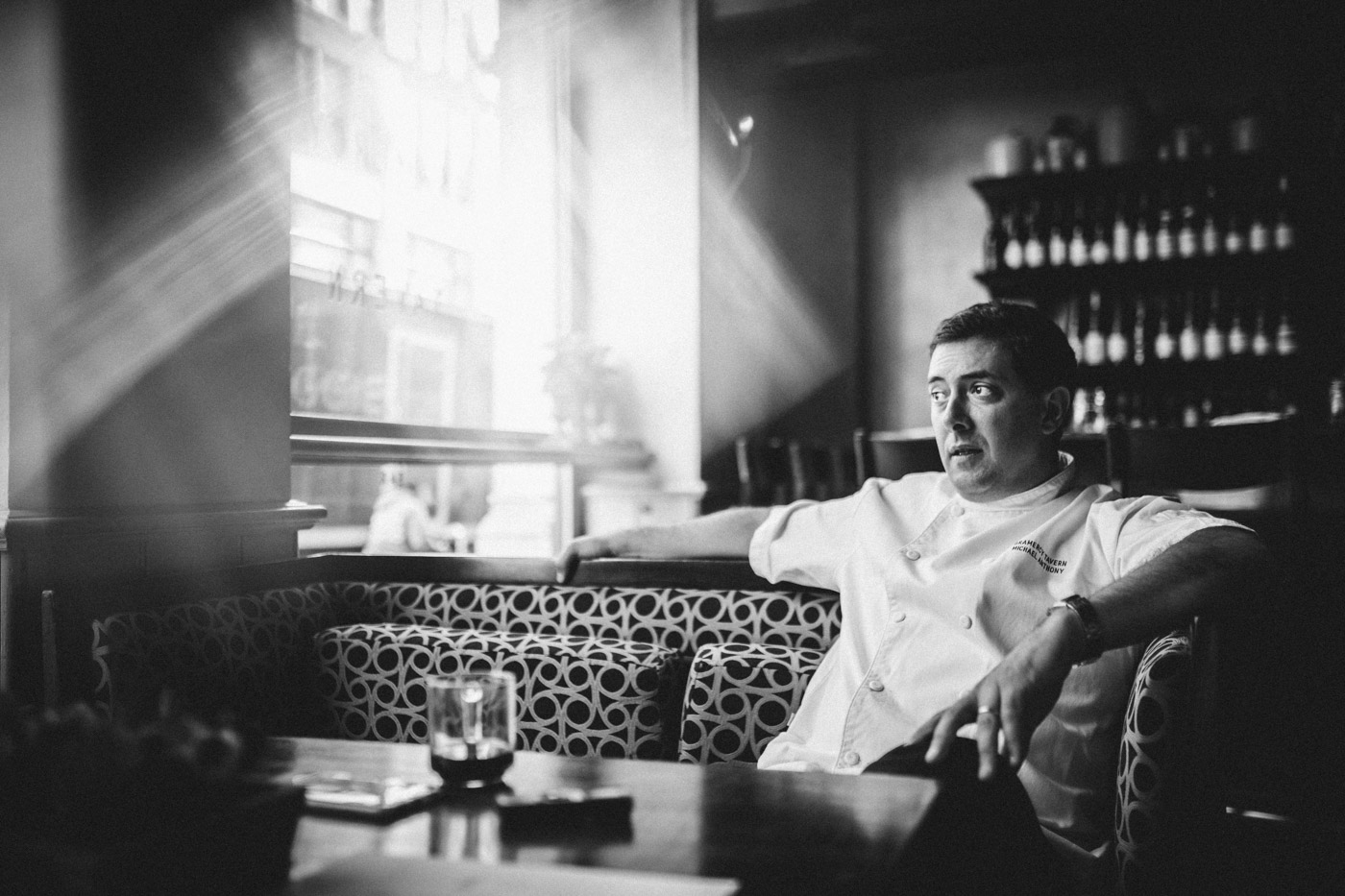
This kind of survival—to manage not just one or two, but a multitude of mainstays amid New York City’s dining minefield—has become a hallmark of Danny Meyer’s Union Square Hospitality Group. Union Square Café, his initial effort, is in its 30th year. And as residents watch so many establishments open and shutter, amassing accolades that only serve to accompany them to an early tomb in a kind of culinary mummification, the question resounds—how do they do it? How does a seemingly innocuous, fairly conventional concept like an American tavern not only make the cut, but continue to set (and raise) the bar—collecting Michelin stars and maintaining the attention of a roster of regular guests?
Gramercy Tavern itself is 22 years old. It’s an age many of us consider to be the threshold of maturity, and yet it’s one which most of the restaurant’s classmates will never see. But after spending a morning with Anthony and Chef de Cuisine Howard Kalachnikoff, it’s obvious this is no collegiate-level cooking we’re talking about—and New York City is no junior varsity league.
To understand how one place can remain on its feet despite such choppy, ceaselessly undulating turf is to know its experienced captains.
——
It’s mid-October inside the building that houses Gramercy Tavern in New York City’s Flatiron neighborhood. Autumn is here, and it’s unpacking its moody morning light in gauzy, confident streams that make it difficult to see Kalachnikoff at first as he joins us from the kitchen. He’s fiercely tall and striking, and though his emergence through the obscuring light is a little intimidating, his gentle handshake and easy rapport with Anthony make both of them instantly approachable—as warming as New York State apple cider.
The men sit comfortably, two generals at ease, and they lack the kind of twitchy distractedness that sometimes comes standard with taking a chef from his kitchen just before service. They’re sharp and focused, and seemingly unshakeable despite the multiple restaurants and dozens of staff members in their charge—and that’s all to say nothing of the fact that their Union Square Hospitality Group has broken the news just days prior that it will be at the front of the pack in the controversial tip-abolishing revolution.
That feeling of steadiness is likely a direct result of establishment, and of life experience beyond the sterile walls of a commercial kitchen; both men arrived in the cooking profession later in their lives. Anthony joined this restaurant in 2006, and Kalachnikoff followed in 2007. In this industry—and especially in New York—spending 10 months in a single position is hard to imagine. How many New York minutes make up 10 full years? How many cooks and restaurants have come and gone? And how on earth has a restaurant without some soundbite-friendly style of food stayed in the city’s top graces for more than two decades?
The answer, they both believe, is in simplicity. “One of the things Mike and I share, fundamentally, is an interest in what is honest, in natural cooking—that’s the basis of our cuisine,” Kalachnikoff explains. Watching the two interact, there’s a palpable respect that goes beyond the bonds formed behind a screaming hot range on a night with a full book of covers. There’s real friendship here—perhaps thanks to those shared fundamentals, and perhaps to common themes in their past.
Both chefs have spent time as expats in Europe. Kalachnikoff, the rare native New Yorker, lived for three years in Paris, working in restaurants before returning to New York and rolling the dice on the music business. “I opened a record company with a couple of partners. Once Napster came out, I stopped denying what was unavoidable. I went back into the kitchen with a more serious approach—well after college—and here we are.”
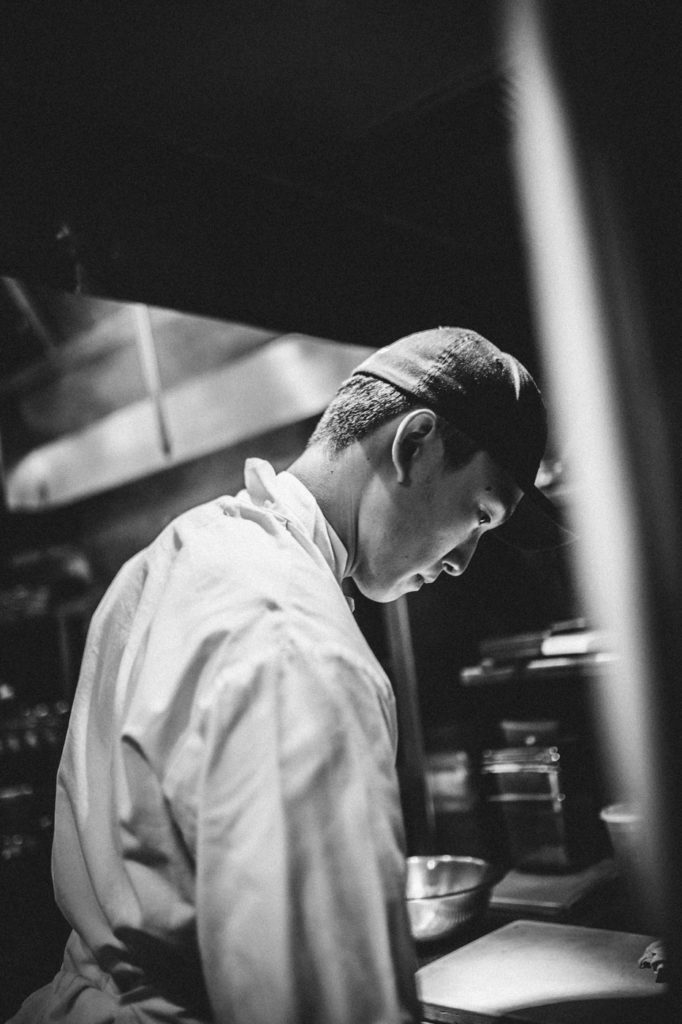
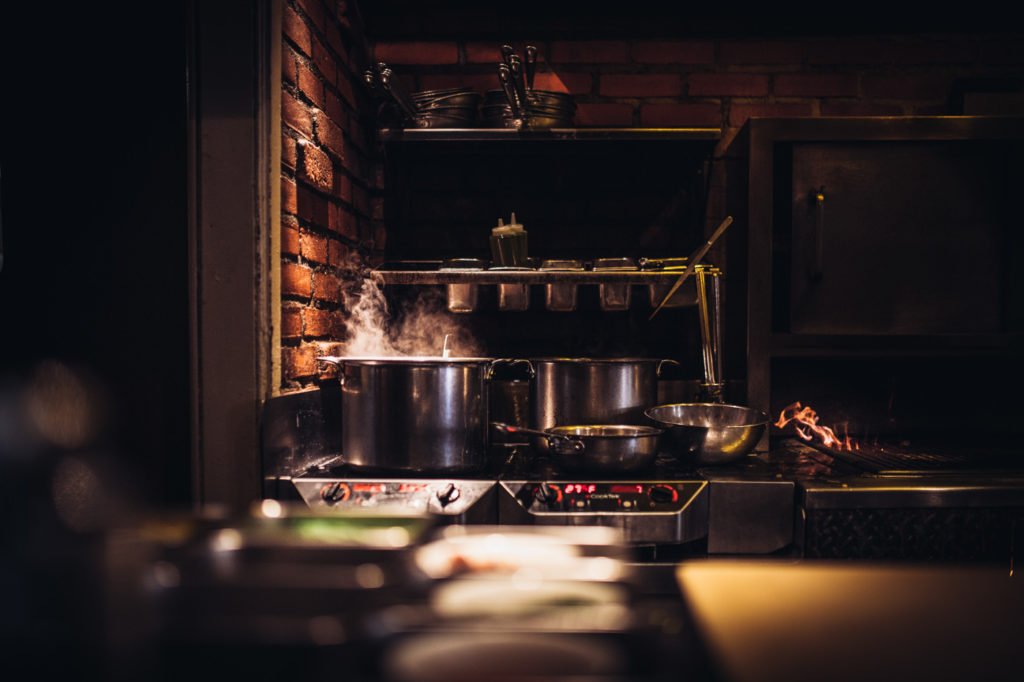
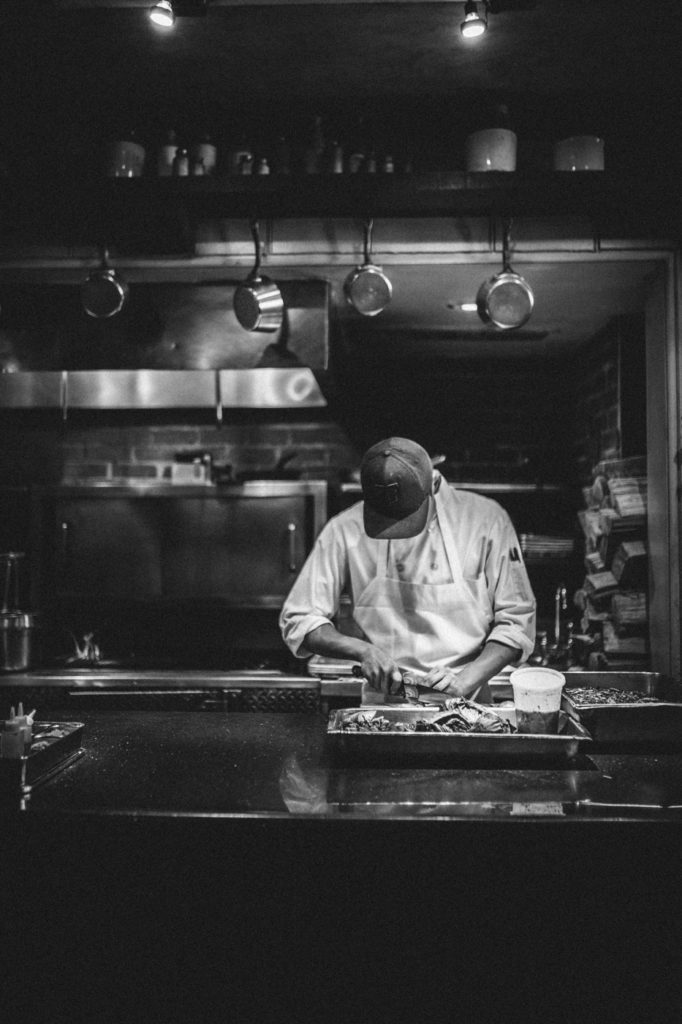
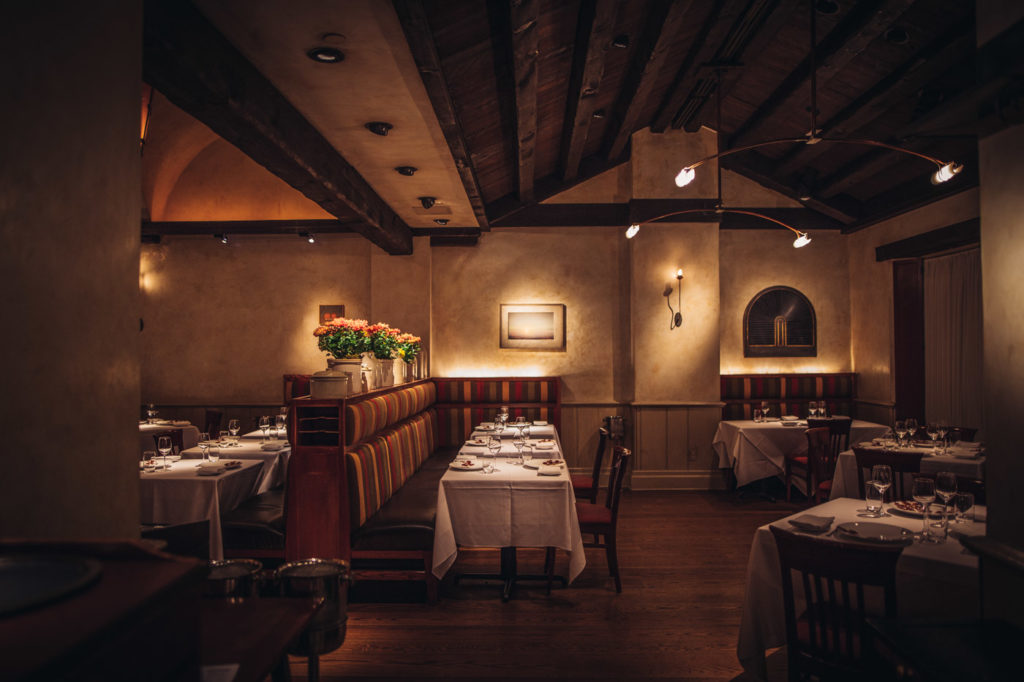
Anthony, who spent his own academic life studying business and languages (Japanese and French, both of which have come in handy during his culinary journey), says, “I didn’t know I wanted to do this growing up. It was late, after graduating from college that I made the decision to cook for a living.”
As such, the concept of “catching up”—both with their American and international counterparts—is one that resonates with Anthony and Kalachnikoff. “[There are benefits] to working in the States and being an American chef. One: we don’t have a lot of rules that bind us. And two: we have to hustle to catch up to those cooks we’ve worked with and for and met along the way—those who are so technically advanced because of committing to [cooking] at an early age,” Anthony explains. “I think it’s a real strength in the way we work—we’re not panicked, not overly self conscious. But it has marked our psyche, the notion that, ‘Wow, we really have to hustle to catch up.’”
Anthony and Kalachnikoff also apply a sense of pride to humanizing and making a community of their kitchen—one as strong as their community of guests. “After living and working in France, we got to Americanize the experience. Everyone on the team has not only the privilege to contribute ideas, but they’re expected to. That’s how our kitchen works well—when the people who work here add to the story,” Anthony says.
Kalachnikoff elaborates on the culture: “We’re committed to providing cooks with a full education. It takes a lot of effort and energy on our part, but it’s a win-win situation that allows us a high rate of retention. The average amount of time a cook spends with us is up to about three years, which is incredibly long for a New York restaurant. It also helps to have alumni around New York City opening up and sharing what they’ve learned here.”
Perhaps part of Gramercy Tavern’s success in such a competitive landscape is its willingness to contribute to its own competition. Anthony muses, “Long before us, [Gramercy Tavern] was a launching pad for great careers in the industry. It’s not just something we pat ourselves on the back about; it’s something we strive for. We start talking about it the second somebody shows up. We spend as much time talking about recruiting and bringing people into the fold as we do when they’re finished and what happens next. Our business is famous for throwing up more roadblocks than it creates avenues. We have a responsibility for people who have committed themselves to working here—to open those doors.”
The restaurant has not only provided a singular establishment serving that sense of home for New Yorkers, but they’ve also cultivated a pool of talent that has gone on to create a number of restaurants actively contributing to the culture of the city—with alum like Tom Colicchio, Shake Shack’s culinary directory Mark Rosati, and PDT’s Jim Meehan. “It’s a source of deep pride to see colleagues go on to do cool things.”
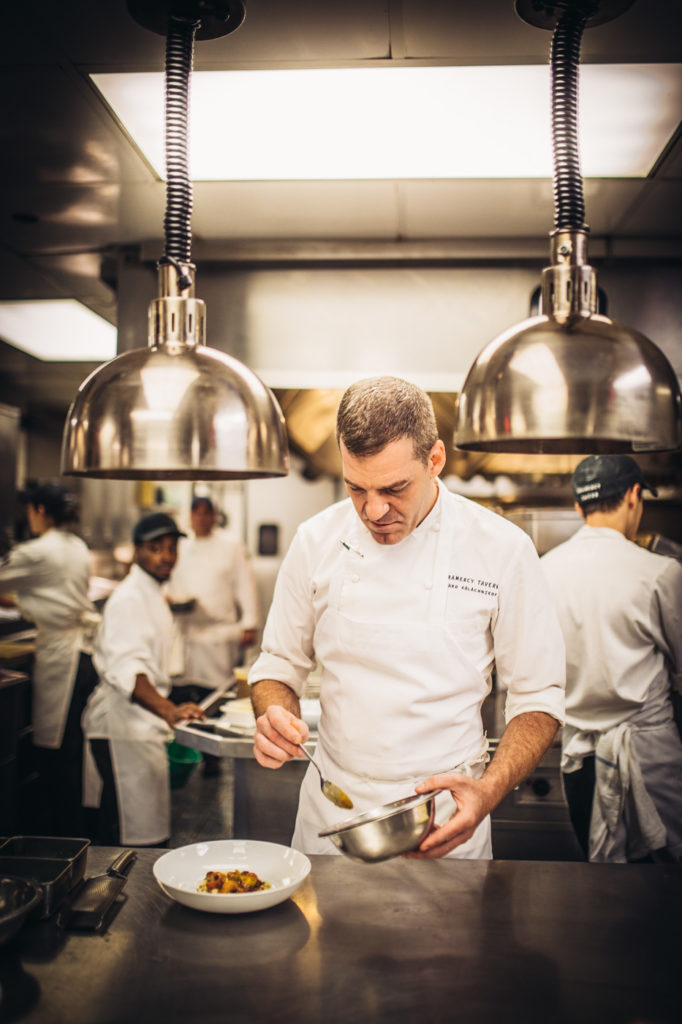
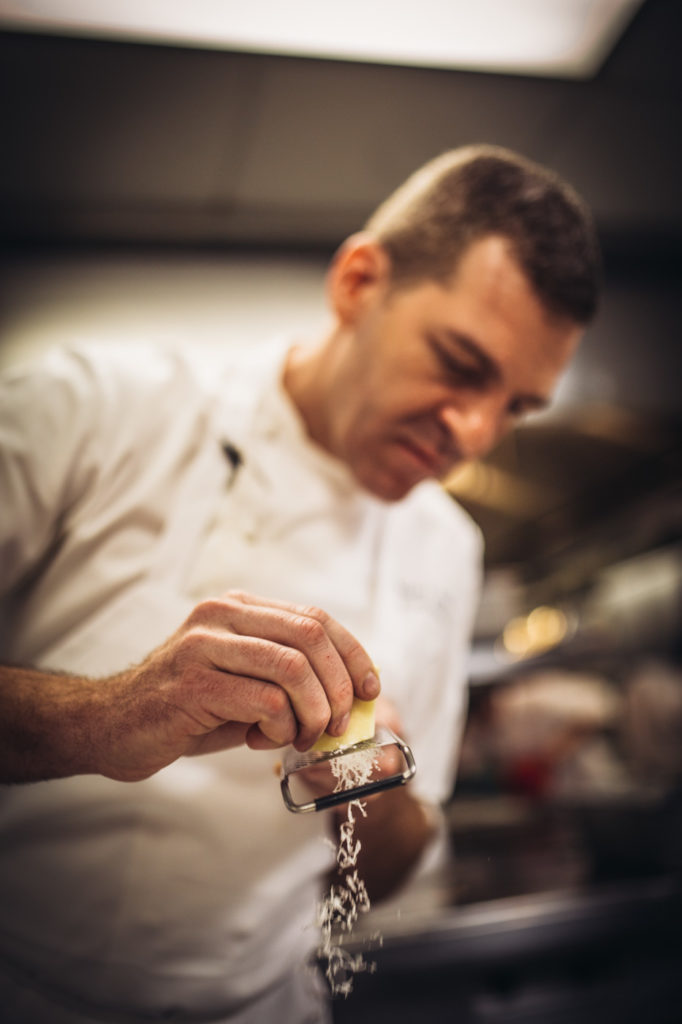
Kalachnikoff returns to those principles—being connected to their team, being aware of their own culinary world as well as the changing one around them. “In my opinion, it’s integrity. Holding true to our core beliefs, and studying—making sure we know what’s going on around town and in cities around the world. Making sure we have a constant dialogue—that we’re keeping in touch with all the cooks, not just the sous chef team. And that we’re going out and eating, tasting what’s new, and to come back and fill the team with pride, while continuing to challenge ourselves and feeling a good sense of integrity for what we’re doing.”
To have a successful staff, each member needs to see a sturdy and creatively fulfilling future in a restaurant with such an established past. It’s how they collectively ensure Gramercy Tavern has a place in the dining fates of their guests.
And of course, the dynamics are influenced by Danny Meyer’s now-legendary hospitality philosophies. “Rather than what happens in most restaurants, where the charismatic, talented leader says, ‘Just act like me, and if you come close, you’ll be successful and earn a spot on our team,’ [Meyer] started to give titles and explanations to the characteristics that have always been important to him––the ones that make up the core business philosophy,” Anthony says. “So anyone who came in with ambition, intelligence, drive—and mostly—a friendly spirit, could latch onto those tools and help make the restaurant run well.”
There’s a sense that what they do is not just about having a stage on which to show off a new dish, but to humbly feed their neighbors, providing not a home away from home, but that necessary New York extension of home. And they take that responsibility seriously.
“The longtime regulars of this restaurant feel a sense of ownership,” Anthony acknowledges. “If this were to suddenly go away, it’d affect their day-to-day. It’s not even just a sense of welcome; they’re a part of this place.”
He recalls an early experience when this became clear. “When I started, I—a little impulsively—began making changes to the menu without thoroughly explaining them to the staff and to the guests. And there were some question marks, some nervousness—like, ‘Hey what’s the new chef guy doing to my dish? Where’s my favorite food?’ Every chef who takes over a new place feels that, but Danny Meyer’s response to it was interesting and unique,” Anthony remembers.
Meyer suggested that guests be included in the decision making; Anthony couldn’t imagine Meyer actually wanted him to ask permission. “I said, ‘You mean ask if it’s okay to put it on the menu?’” he laughs. But that wasn’t the intention. “[Meyer] said, ‘Listen to how they respond; make them feel a part of the process of the evolution of this restaurant.’” To inform them, to involve them—it was an effective approach. “He wanted to make people feel included, to ask not for their approval, but for their input. Whether they were guests who eat here three to four times a week, or people who have worked here for 15 or 18 or 20 years—every time you bring people along for the ride, you stabilize the foundation of the restaurant.”
“It was [having] the foresight and vision—if I just tell people where I want to go, most of them will come along for the ride. And they did,” Anthony concludes.

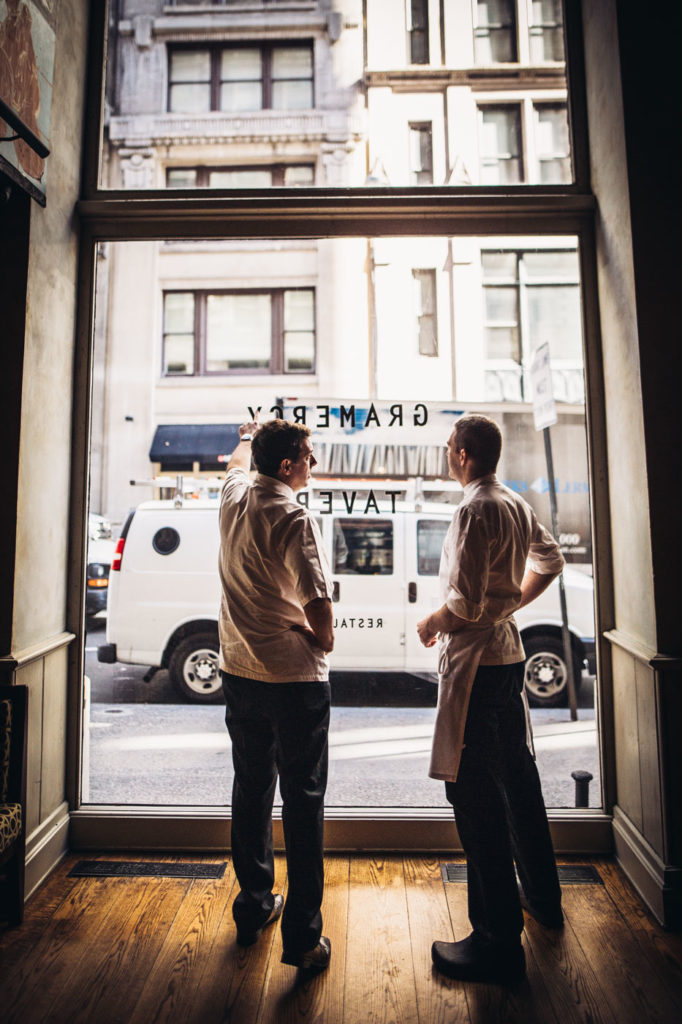
Bringing those regulars into the restaurant’s narrative is all part of the question of pertinence. “How does a restaurant that’s 21 years old stay relevant?” Anthony returns us to my initial question, posed when we first took our seats. “We said from day one that staying relevant was our number one preoccupation,” he says. “We never said the target that we’re throwing a dart at every morning is get another Michelin star. The target was to stay relevant.”
During our conversation, the men speak resolutely, playing off of one another effortlessly. Perhaps from their experiences as individuals as well as together, but perhaps also because there’s a confidence due to the sturdiness of a platform like Gramercy Tavern—a freedom that comes with being so integral to its surroundings, so reliable and so relied upon. It allows the team to be creative without the pressure of impressing a new critic every night. Anthony says, “This kitchen and everyone who works here favors the process of cooking and flavor over flashiness.”
The food is complex, but uncomplicated; it’s fresh, but familiar. There are no impossibly high expectations, and the menu doesn’t suffer beneath the burden of substantiating a $300 tasting menu price tag. It’s simple, honest fare that requires no explanation or instruction. It’s unobtrusive to the community that enjoys it, simply one part of a greater experience for those who make this place home.
That comfortable confidence is apropos of their space and concept. Everything in Gramercy Tavern, from the food on the plate to the could-be-your-neighbor dispositions of Anthony, Kalachnikoff and crew, makes it the kind of place that—despite their brigade working behind the scenes—feels easy.
——
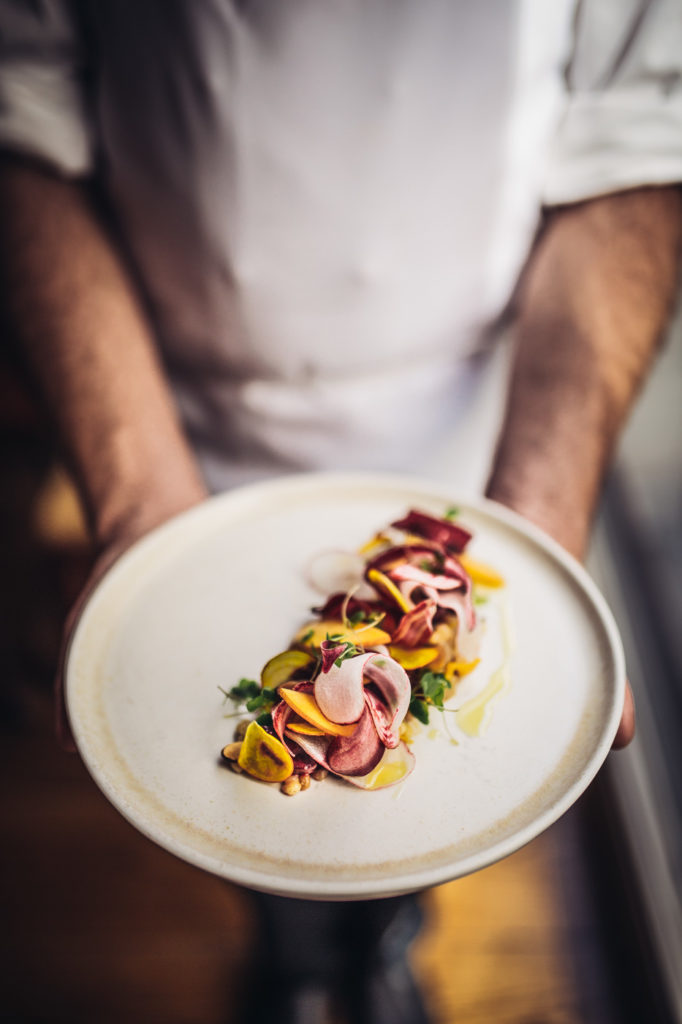
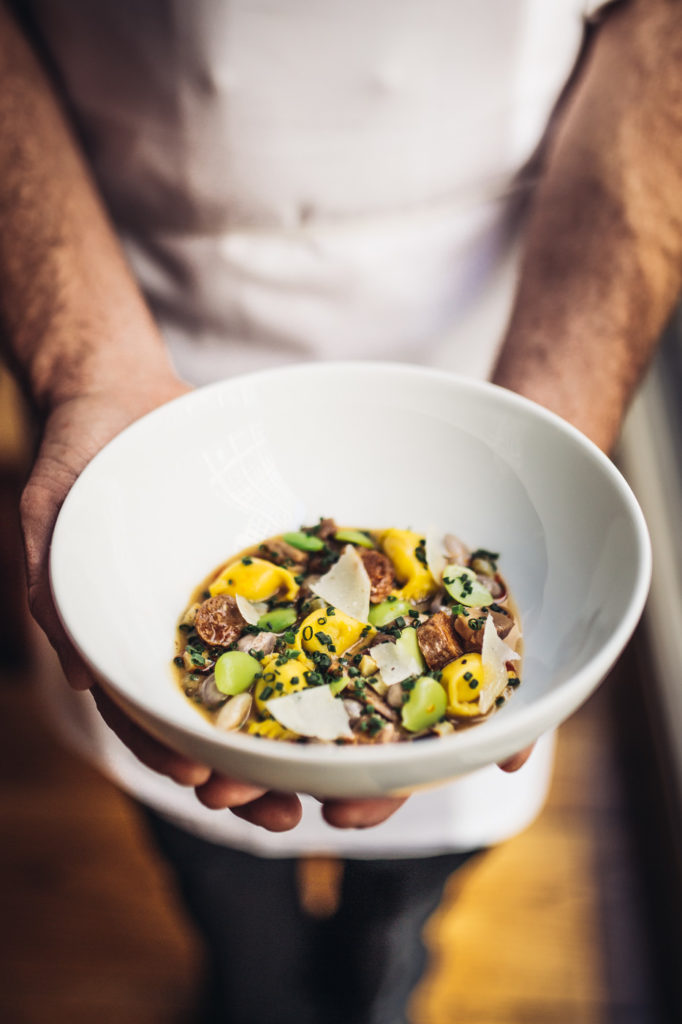
To me, the word “tavern” calls to mind dirt-floored dens in the Middle Ages, where men tied up their horses, wenches served before roaring fires, and conquests were toasted with steins of nondescript ale. The medieval association makes it hard to imagine a Michelin inspector (probably monocled and top-hatted, because let’s be honest, that’s how I imagine them) coming in to judiciously bestow a star. Anthony continues, “[The restaurant] renegotiated what people think about a tavern. It created a tantalizing juxtaposition of casual nuances, combined with highest level cooking.”
The interpretation is loose, allowing breathing room that doesn’t choke the creative supply. “[Had they relied on] charm and [nostalgia] as inspiration for a tightly designed New England tavern, filled with cutie pie things, I don’t think there’d have been room for chefs and servers and smart, ambitious people to subsequently add to those stories,” Anthony explains. “They created a stage that allows new people and ourselves as well as people after us to come and add to the story.”
Rather than creating singular restaurant experience, Gramercy Tavern has devised an operating system. An infrastructure open to adaptability—to plug-ins and changing landscapes. The brilliance is in having the humble foresight to know that trends would change, that in creating a classic platform founded on timeless principles—like honesty, quality and community—the restaurant itself could never go out of style.
For 21 years, they’ve given New Yorkers what they need most: a place to live outside their own four walls. To host their dates, dinners, and business transactions, without having to think too much about what’s on the menu. The restaurant is indispensable to loyalists, woven tightly into the memories of so many.
Later, describing the interview to a friend, she asks me what “kind of place” Gramercy Tavern is. It’s a common question in today’s food landscape. Rapidly evolving trends illicit this need to designate a restaurant—tasting menu, veggie forward, fast casual, molecular gastronomy, or of specific ethnic influence. I mentally mine my vocabulary for the appropriate term or description. “It’s like going to a family friend’s house—or your favorite uncle’s on Christmas,” I tell her, then adding, “Just with way better food.”
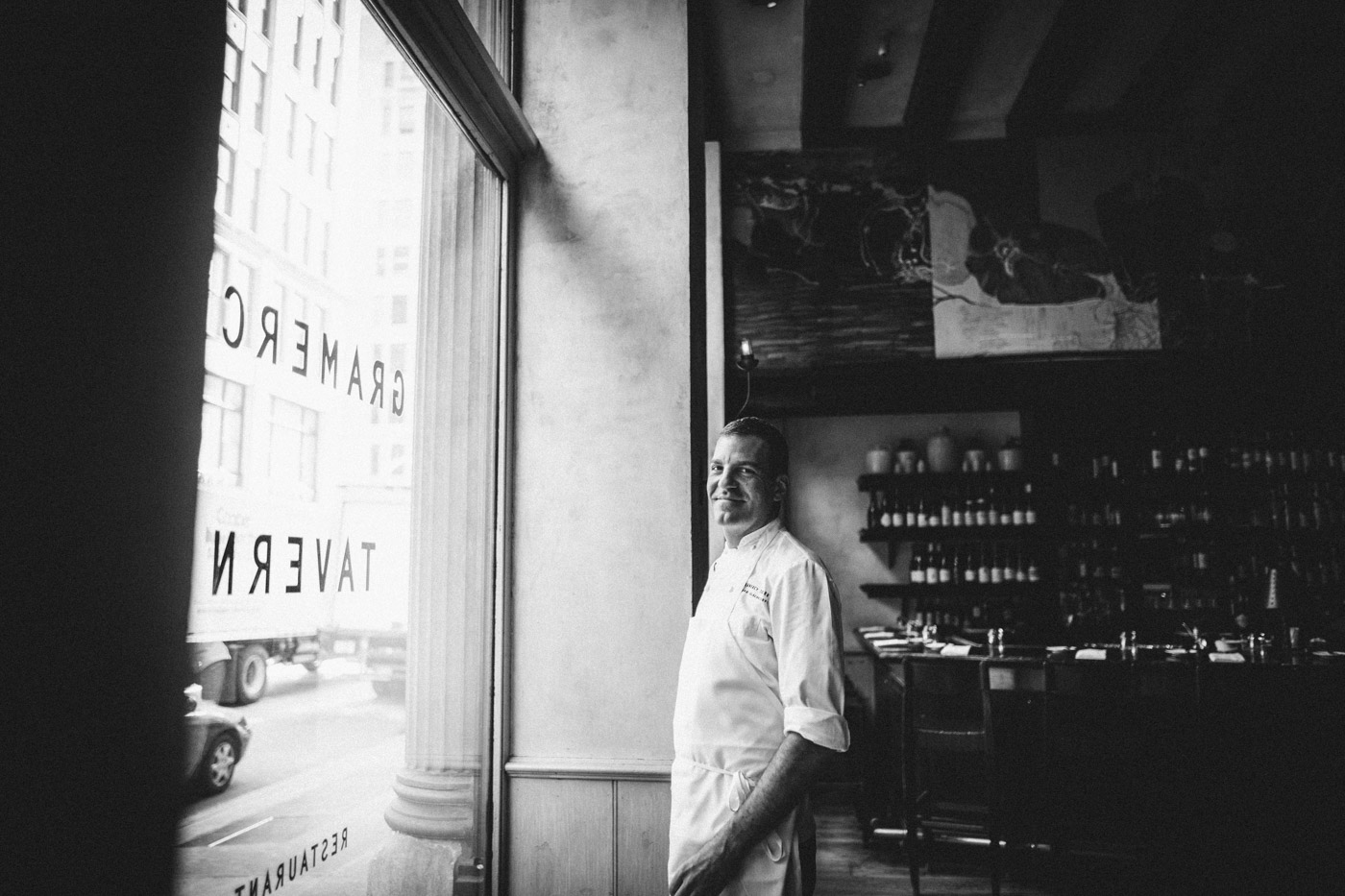
By the time we wrap, the light has found its way into far corners of Gramercy Tavern, gently illuminating the room—and you can sense its storied life. Where guests and team alike have made contributions. Adaptable and agreeable to the changing times so common in the dynamic city. And as such, it’s been successful in escaping the demise of restaurants in close proximity.
Gramercy Tavern isn’t just a dining establishment; it’s a place for its cooks and staff to mature and to learn, for a menu to evolve with its changing environment, and for diners to grow and live out milestones with friends or family or perfect strangers. Its story is one of friendship and familiarity, of the wisdom of age, and of providing something pivotal to the lives of its neighbors.
Once the chefs return to duty, helping their team prepare for lunch, I look around the dining room—now thoroughly overwhelmed by fresh flowers delivered daily by their designated florist—at the staff preparing to welcome their guests, some of whom have been with the restaurant for years, others just getting started. Above our heads, Kushner’s canvases illustrate mouth-watering scenes—pineapple and tomato, corn on the cob and tri-color peppers—it’s a breathtaking bounty. The space is so full of life. For space-starved city-dwellers and beyond, this is not just a dining room. This room, is a living room.
——
Gramercy Tavern
42 E 20th St, New York, NY 10003





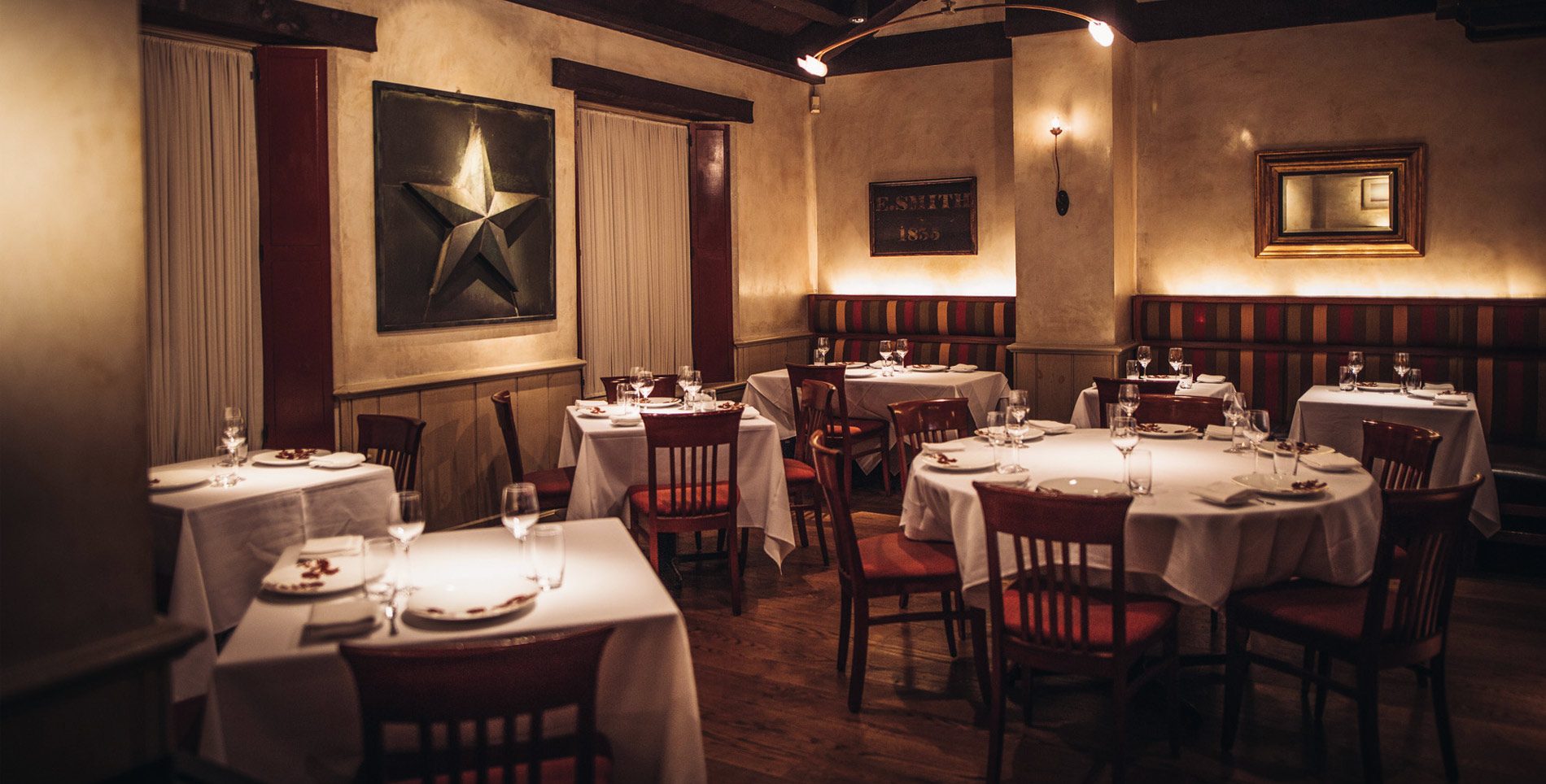

Our comments section is for members only.
Join today to gain exclusive access.